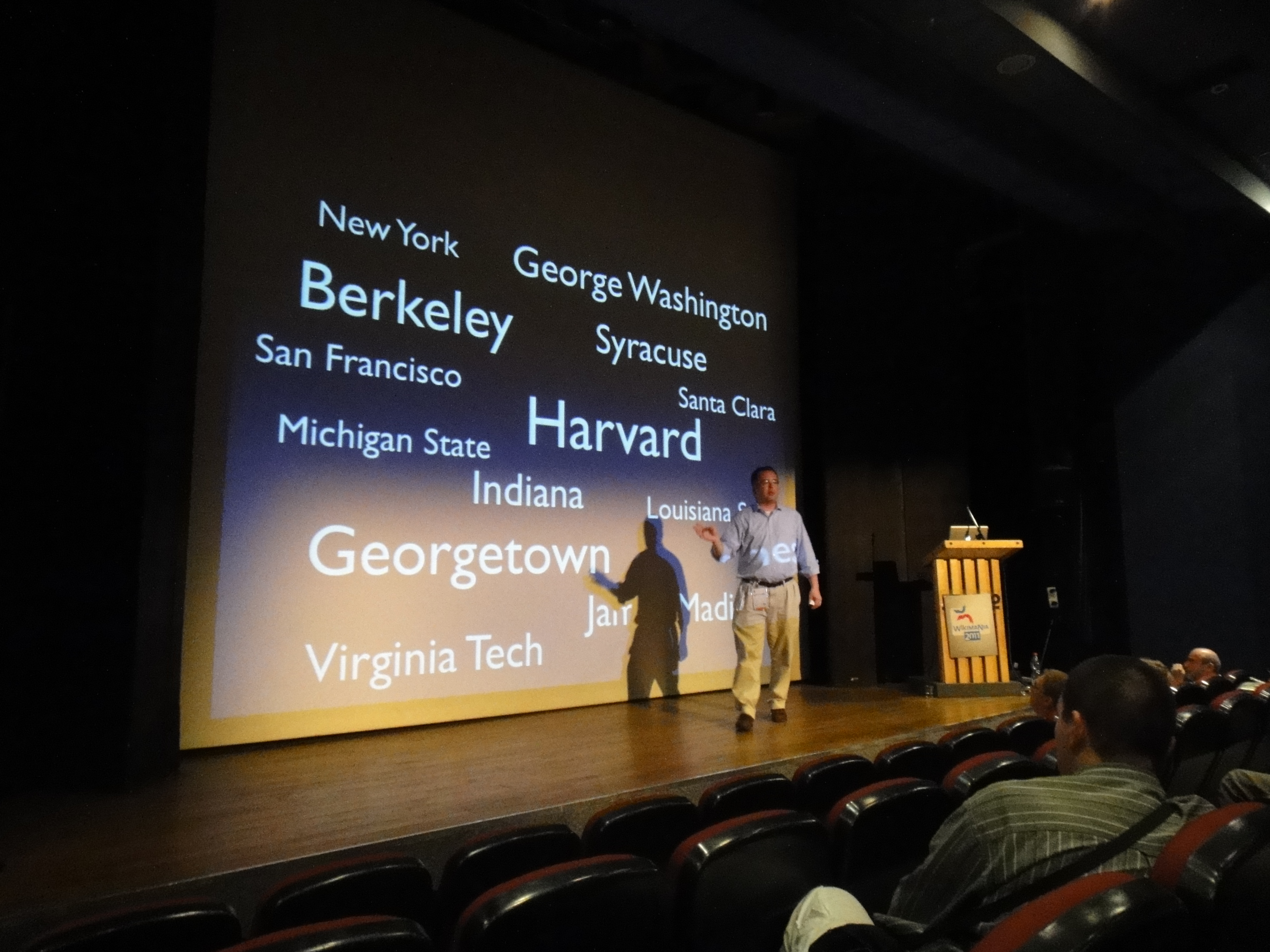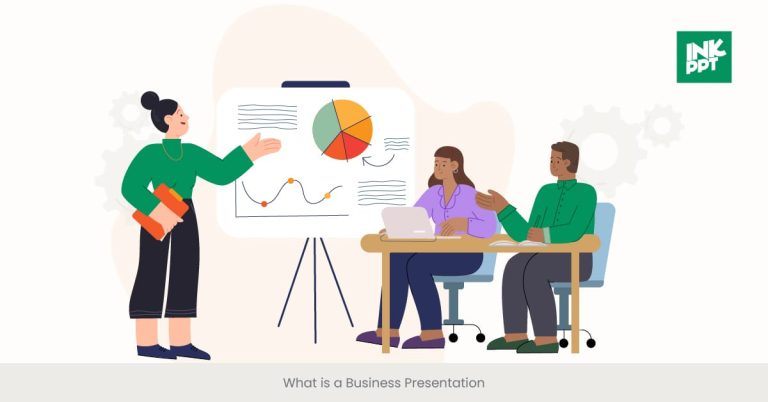What is a Presentation?
A presentation is a concise method of conveying information through visuals and spoken words. It is a communication tool that helps deliver messages effectively, engage audiences, and persuade or inform them about a specific topic.
Presentations play a crucial role in various aspects of our lives, whether in business, education, or personal settings. They are commonly used in meetings, conferences, classrooms, and even online platforms. Through presentations, speakers can showcase data, share ideas, pitch projects, teach concepts, or express opinions effectively.
A well-structured presentation usually includes slides with text, images, charts, and graphs, along with the speaker’s delivery that provides additional context and explanation. The aim is to keep the audience engaged, promote understanding, and leave a lasting impression. Strong presentation skills are highly valued in many professions, as they have the power to influence and inspire others.
What Is A Presentation?
A presentation is a method of conveying information in a structured and interactive manner. It holds significance across various industries and disciplines. Presentations are commonly employed in educational settings, where teachers use them to deliver lectures and engage students. Similarly, professionals in corporate settings utilize presentations to pitch ideas, showcase reports, or conduct training sessions.
Presentations play a crucial role in sales and marketing, as they help highlight product features and benefits to potential customers. Additionally, in the field of research, presentations enable scholars to share their findings with peers, fostering collaboration and knowledge exchange.
They provide a platform for individuals to communicate ideas effectively and leave a lasting impact on their audience. Whether it is a slideshow, speech, or visual demonstration, presentations serve as an essential communication tool in today’s fast-paced world.
Types Of Presentations
Presentations are a powerful tool for sharing information, persuading an audience, and entertaining people. Some of the common types of presentations include but are not limited to the following:
- Informative: Provides knowledge and data.
- Persuasive: Influences opinions or actions.
- Demonstrative: Shows processes or how things work.
- Training/Instructional: Teaches skills or knowledge.
- Entertainment: Amuses and engages the audience.
- Status Report: Updates ongoing projects.
- Sales/Marketing: Promotes products or services.
- Conference/Keynote: Shares expert insights and trends.
- Educational: Facilitates learning in academic or professional contexts.
- Motivational: Inspires positive change and mindset.
- Review/Retrospective: Reflects on past events or projects.
- Product Launch: Introduces new products or services.
- Investor Relations: Shares financial performance with stakeholders.
- Pitch: Presents business ideas or projects.
- Other Specialized Formats: Tailored to unique purposes or contexts.
Whether it’s informing, persuading, or entertaining, presentations have become an integral part of modern communication methods.
Elements Of A Successful Presentation
A successful presentation includes elements such as a clear goal and objective, engaging content, and impactful visuals. These elements are crucial in delivering a presentation that captivates the audience. With a clear goal and objective, the presenter can effectively communicate their message.
Engaging content and visuals are important as they hold the attention of the audience and make the presentation more memorable. Incorporating effective delivery techniques, such as confident body language and appropriate use of tone and voice modulation, helps to ensure the message is effectively conveyed.
By focusing on these elements, presenters can create presentations that are engaging, informative, and leave a lasting impression on their audience.
Preparing For A Presentation
Preparing for a presentation involves thorough research and gathering information. This step is crucial in ensuring that the content is accurate and well-supported. Structuring the presentation is equally important, as it helps to organize ideas and present them in a logical manner.
This includes dividing the content into sections and determining the order in which they will be presented. Creating visual aids can also enhance the presentation by engaging the audience and making complex information easier to understand. Visuals such as graphs, charts, and images can help to reinforce key points and make the presentation more visually appealing.
Overall, adequate preparation is essential in delivering a successful presentation that captures the attention of the audience and effectively communicates the intended message.
Delivering A Presentation
A presentation is a form of communication that involves delivering information to an audience. It encompasses verbal and non-verbal methods of conveying messages. Body language and posture play crucial roles in effectively delivering a presentation. By maintaining eye contact, using appropriate gestures, and standing or sitting with confidence, speakers can engage listeners.
Audience interaction and engagement are also key components of a successful presentation. Encouraging participation through questions, polls, or discussions helps keep the audience interested and involved. Effective presentations require careful planning, clear communication, and a thorough understanding of the subject matter. Presentation is even possible without an audience.
By focusing on body language, verbal and non-verbal communication, and audience interaction, presenters can deliver impactful presentations that effectively convey their messages.
Overcoming Public Speaking Anxiety
Public speaking anxiety can be a daunting experience for many individuals. In order to overcome this fear, there are various techniques that can be employed. Building confidence and self-assurance is key, as it helps alleviate nervousness. Practicing and rehearsing effectively is another effective strategy, as it allows for familiarization with the content and delivery.
By implementing these techniques, individuals can gradually reduce their anxiety and become more comfortable in public speaking situations. This not only enhances the overall presentation but also boosts self-confidence and enables effective communication. With consistent effort and practice, individuals can overcome their fear of public speaking and deliver impactful presentations.
So, if you struggle with nervousness while presenting, try these techniques and witness a significant improvement in your public speaking skills.
Tips For Creating Engaging Presentations
Presentations are a powerful tool for conveying information and engaging an audience. One effective technique is using multimedia and visual aids, such as images or videos, to enhance the understanding and retention of the message. Another important aspect is incorporating audience participation, which can be done through interactive activities or question-and-answer sessions.
By involving the audience, you create a more dynamic and memorable experience. Storytelling is also a key element in creating engaging presentations. It helps to convey information in a compelling and relatable way, capturing the audience’s attention and keeping them engaged throughout.
When creating your presentation, consider these tips and techniques to ensure that your audience remains captivated and leaves with a clear understanding of your message.
Presentations In Different Environments
A presentation is a way to convey information or ideas in a structured manner. It can be used in various environments such as business, academic, social, and community settings. In the business world, presentations are often used to pitch ideas, showcase products, or deliver reports.
Academic presentations are commonly used to communicate research findings or share knowledge with peers and professors. Social and community presentations serve to inform and engage audiences on topics that are relevant to society or a specific community. Presentations enable speakers to use visual aids, such as slides, to support their message and enhance audience understanding.
Effective presentations require careful planning, organization, and delivery to captivate and engage the audience. Whether in a corporate boardroom, classroom, or community gathering, presentations play a crucial role in sharing information and influencing outcomes.
Common Mistakes To Avoid In Presentations
Presentations are a crucial part of the business world, allowing professionals to convey information effectively. However, many individuals make common mistakes that hinder their success. One such mistake is reading directly from slides. This not only disengages the audience but also shows a lack of preparation.
Presenters should aim to speak confidently and use slides as visual aids rather than relying on them as a script. Another mistake is ignoring the needs and interests of the audience. It is essential to understand the target audience and tailor the presentation accordingly to keep them engaged and interested.
By avoiding these mistakes, presenters can ensure that their presentations are engaging, informative, and memorable.

Credit: en.wikipedia.org
Enhancing Presentation Skills
A presentation is a means of conveying information, ideas, or thoughts to an audience. Enhancing presentation skills can be achieved through various techniques. One effective approach is joining public speaking clubs or organizations. These platforms offer opportunities to practice and gain valuable feedback and constructive criticism.
It allows individuals to refine their delivery, body language, and content. Another key aspect of improving presentation skills is continuous practice. The more one engages in presenting, the better they become at captivating an audience and effectively conveying their message.
With each presentation, individuals can assess their strengths and weaknesses, making necessary adjustments for improvement. It is through dedication and perseverance that presentation skills can be enhanced and perfected.
Frequently Asked Questions
What Do You Mean By Presentation?
A presentation is a concise way of conveying information using visuals and spoken communication.
What Are The 4 Types Of Presentation?
The 4 types of presentation are informative, persuasive, instructional, and entertaining.
What Are The 5 Parts Of A Presentation?
The 5 parts of a presentation are: introduction, main body, supporting evidence, conclusion, and Q&A.
What Is The Main Point Of A Presentation?
The main point of a presentation is to convey information and engage the audience.
Conclusion
Presentations are a vital communication tool in today’s business landscape. They allow us to convey information, ideas, and concepts in a clear and compelling manner. Whether it’s a sales pitch, a training session, or a boardroom presentation, the ability to effectively present is a valuable skill that can lead to success.
A well-crafted presentation captivates the audience, keeps them engaged, and leaves a lasting impression. By carefully planning and organizing the content, using visual aids to enhance understanding, and delivering the presentation with confidence and clarity, you can ensure that your message is communicated effectively.
Remember to tailor your presentation to the needs and preferences of your audience, and always strive for simplicity and clarity in your delivery. With practice and persistence, anyone can become a master presenter. So take the time to hone your presentation skills and watch as your communication and career soar to new heights.




